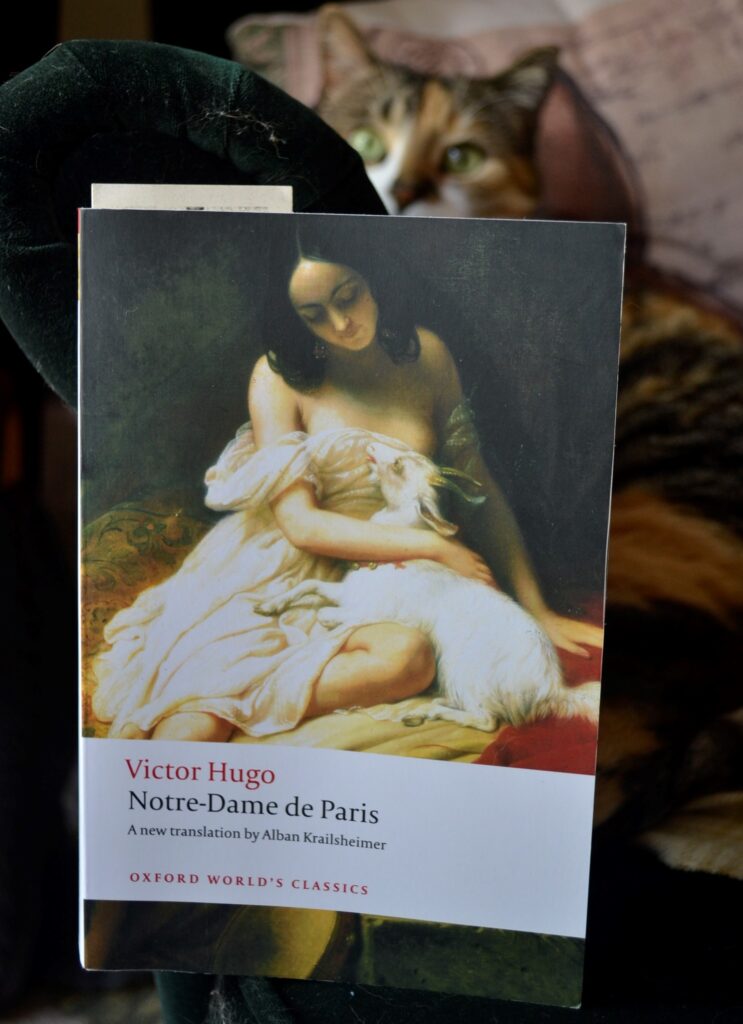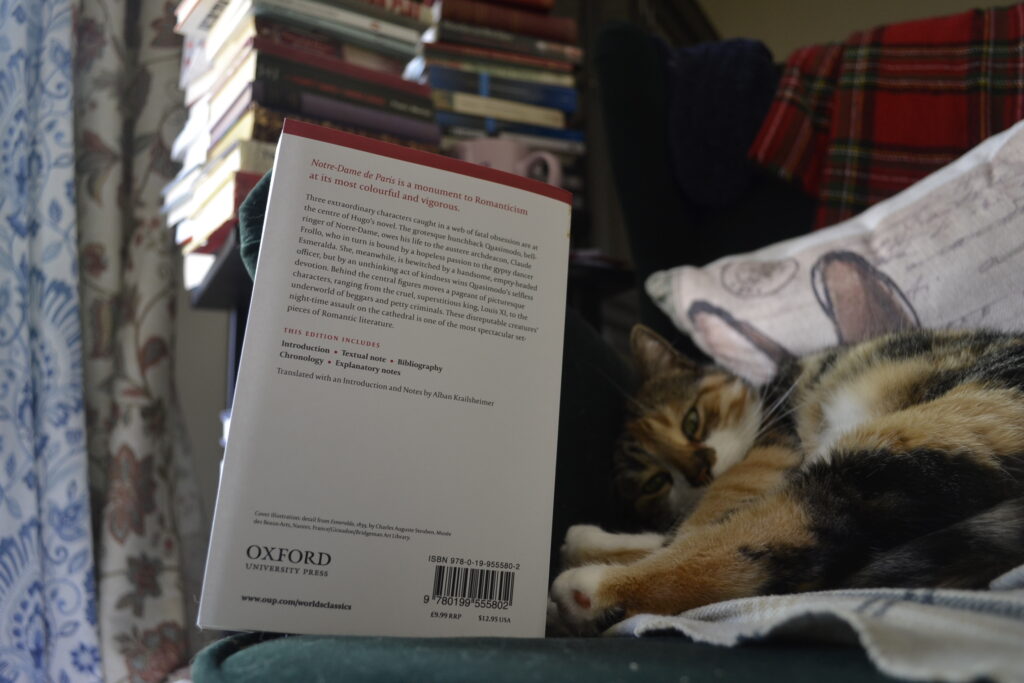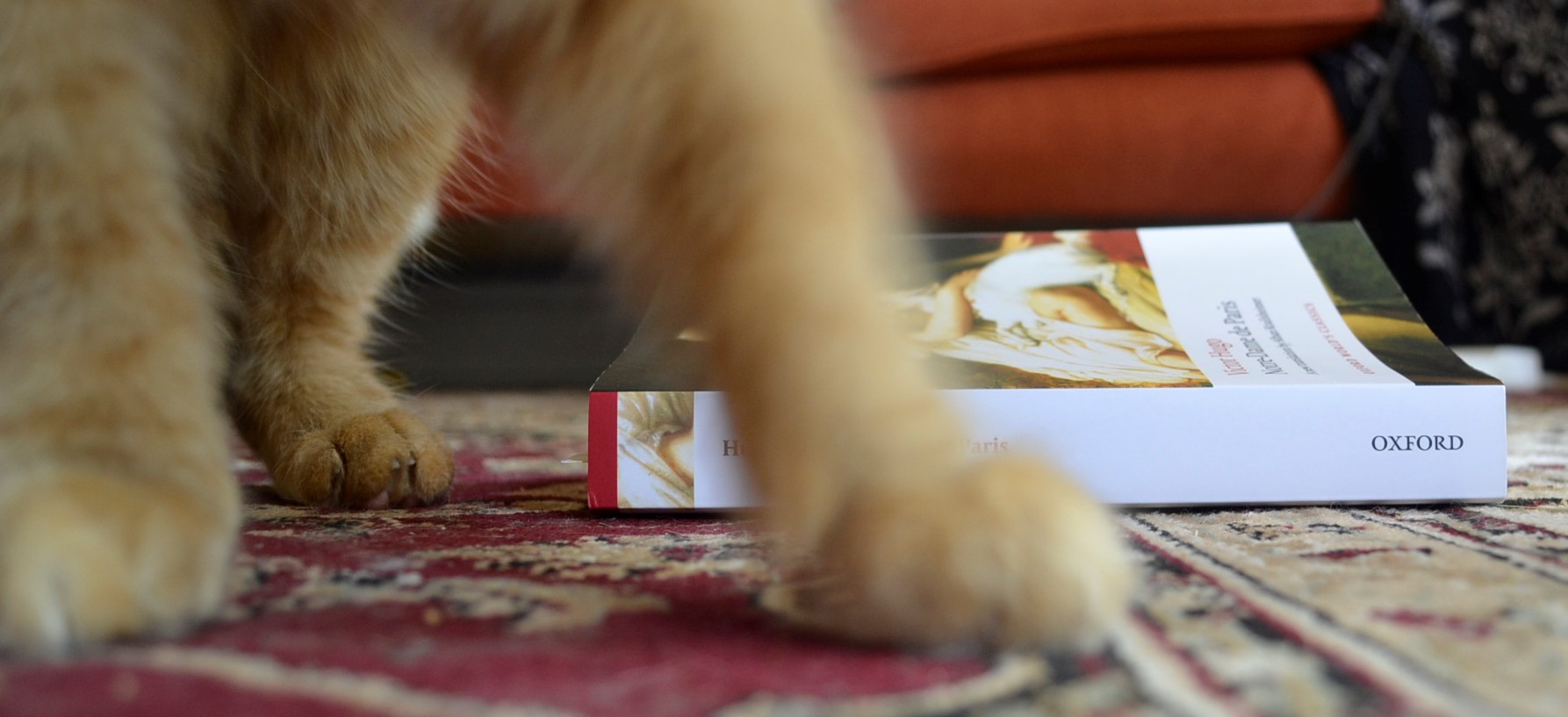The Definitive Edition
Victor Hugo’s Notre-Dame de Paris (commonly known as The Hunchback of Notre-Dame) is a book that I have wanted to read for a long time, and it is a surprisingly difficult book to find. Due to how many adaptations it has had and how prominent it is in the canon of classic literature, I thought it would be a staple of used bookstores or the bigger new bookstores.
Well, it isn’t. And that makes me sad.
I was excited when I finally did spot a copy and I didn’t hesitate to purchase it, but I got a bit of surprise when I sat down to actually read it. Turns out the edition I bought was missing a few parts. It’s not exactly uncommon to find out that a book exists in multiple different editions with chapters or parts being missing or arranged differently. Sometimes these differences don’t make much of a difference, yet sometimes they can change the face of the novel.

As a general policy when I find out that a novel has multiple editions, I do a bit of research to figure out what edition I have and what is considered the definitive edition. I try to read the most common edition among scholars whenever possible, so in this case that meant that I had to order another copy of the novel from the internet. Slightly annoying, but I never mind having an extra edition of a book I’m fond of.
So Many Adaptations
I’m sure most people have heard of this novel, and I’m sure most people have a vague idea of the plot of this novel. However, the adaptations I have seen of this work are quite far from what Hugo wrote.

Firstly, Notre-Dame de Paris is not centred around the character of Quasimodo. In fact, it more closely follows Esmeralda and Claude Frollo as the priest develops an obsession around and tries to carry off the gypsy. Secondly, the novel has a much darker conclusion and a darker tone in general. Hugo is not writing a story with a happy ending. He is writing about a moment in the history of Paris.
That doesn’t mean I don’t intend to watch any of the adaptations I previously enjoyed, it just means that that I watch them with the original text in mind and don’t set my expectations very high.
An Ode to Architecture

There are many themes present in Notre-Dame de Paris, but primarily it’s a novel about the architecture of Paris and Hugo’s desire to preserve it. Hugo proposes that architecture was the most uninhibited form of expression prior to the rise of the printing press and that what many artists could not say in words, they said in sculpture, carving, stained glass, brick, and mortar. As such his descriptions of buildings are lush and there are chapters that are primarily devoted to the landscape of the city and the construction of the structures within it.
The novel is aptly titled, for the cathedral does indeed play a central role in the book and serves as a touchstone for the events contained within it.
However, Notre-Dame de Paris isn’t just about buildings. It is also about the clashes between church and state at the time the novel is set, as well as the medieval legal process and its obvious barbarity when it comes to determining guilt and administering punishment.
A Piece of 15th Century Paris
Notre-Dame de Paris means to present a piece of Paris in the year 1482. Instead of having what would have been a more traditional structure at the time of following a storyline or character over several years or even decades, Hugo choses to present the reader with a narrative that is focussed on the city and the setting.

He wants the reader to have a full sense of what Paris was in the late fifteenth century and to accomplish this includes a larger cast of characters from all different walks of life. From beggars to clergy to gypsy to peasant to student to magistrate to soldier. Hugo wants to present the reader with an idea on what it would be like to live in the city during this time and see these events happening around you.
Hugo’s main strength lies in his characters and in their interactions with the world in which they live. He uses them to make statements about kindness and cruelty, and their stories flow together seamlessly as they weave into the tapestry of the city around them. For that alone Notre-Dame de Paris is worth a read. As a writer, I admire the technical skill that went into this work and I tried to study it carefully at the same time that I enjoyed the narrative.
An Immersive Experience
Like most readers (if not every reader) part of the reason that I love books is that they can provide a window into a place and time that would be inaccessible otherwise. One of the reasons I am drawn to classics is that I like to learn and read about different points in history and learn about the past. Notre-Dame de Paris allowed me to travel to a Paris of over five hundred years ago.

I actually went to Paris six and a half years ago with my lovely spouse. We were on our honeymoon and wanted to see the city before we got a plane to go back home. It’s hard to articulate, but it was kind of strange to actually go to Paris physically. It was almost like the Paris that I read in books and saw in movies — all of which were at least forty years old, but more commonly one hundred and fifty years old — was somehow more concrete to me. Like that was the Paris that I was used to, and the one that I was expecting. Like I should have been seeing horse-drawn carriages and the streets of Impressionist paintings.
I realize that my feelings weren’t entirely fair to Paris, and if I’m ever fortunate enough to go back I hope to be able to enjoy seeing the city as it is instead of being fixated on what it once was like.
